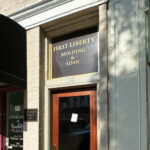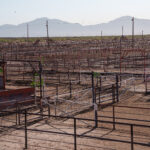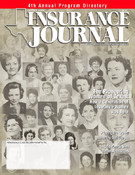On June 2, 1944 at 9:30 a.m. in the roof garden of the Hotel Adolphus in Dallas, the first meeting of the Insurance Women of Texas was opened by call to order by Mrs. Ruth A. Fredde, president of the Insurance Women of Dallas…”
So opens the minutes of the organizational meeting of the Federation of Insurance Women of Texas, and so opens the beginning of a 56-year tradition that has helped change the face of insurance in this state. It was a major step toward establishing women as a cohesive, visible and vocal component of the industry, though certainly not the first taken by insurance women in Texas.
Some 70 years prior, the first female commissioned agent in the country took the reins of her father’s agency in San Antonio. Throughout the following century, San Antonio would serve as the cradle for numerous other firsts for insurance women in Texas.
It was in 1876 that E.A. Florian died, leaving his agency to his eldest daughter, Fannie H. Florian. Florian had opened San Antonio’s first agency in 1852 after moving to Texas from Memphis by way of Indianola. When Fannie took over in 1876, she became the first woman not only in Texas, but in the country, to be commissioned in the insurance business. She ran the business for 13 years, until she married and turned it over to her brothers who, in turn, sold it a few years later. Florian’s company is still in existence today, doing business as Wray & Westheimer Agency.
It wasn’t until 1900 that another woman would grace the history books as part of the insurance industry, this time as an officer of the newly established Texas Association of Insurance Agents. Mrs. J.T. Murphy served the association, though there is no record of what her role was or how she became an officer.
Over the next 40 years, women agents were working across the state, often filling in for their husbands as they went to war or passed away. But again, little information was recorded about their business lives or their activities in the industry. Women, at that point, simply weren’t a respected part of the business world.
But women across Texas and across the country were joining together to find that respect, creating for themselves a voice in the male-dominated business world.
The creation of an order
In 1925, 10 or 12 women working in the fire and casualty stock companies and agencies came together as the Insurance Women’s Club of Dallas. It was only the second such organization in the country. By 1940, the group’s membership had blossomed to 57 members, and by 1944 to a whopping 223 members. But Texas was still lacking a statewide organization; one that would pool the resources of the—by now—thousands of women working in the industry.
It was during this time, around World War II, that women finally made breakthrough strides in the insurance industry, due, in part, to a shortage of men to fill positions.
The age of Rosie the Riveter was upon the country— the first time in history women had entered the public workplace en masse. Despite their increased numbers, the working world was not always an easy place to be for a woman.
It was 1944, and a young Sally Nowlin, only 24 years old, had just been hired by Cravens, Dargan and Co. as a special agent for the region surrounding San Antonio. She was the first woman to hold such a position in Texas since World War I. Not only did she have to overcome travelling in business attire in a car without air conditioning, but also the rampant notion that women couldn’t do the same work as men.
One year to the date after Nowlin—Walsh Downs—hired by Cravens Dargan, the company newsletter “The Brand News” ran a headline reading “Your Special Agent May Wear Skirts—Crucible of war has proved women can stand responsibility and deliver goods on men’s jobs.”
Walsh Downs, now 80, often found herself at odds with a society still coming to terms with “working girls.” Some agents refused to do business with her, and worse, some of her peers refused to recognize her as just that, their peer.
“Men were really opposed to women being in positions of importance,” Walsh Downs said. “I think World War II really helped change a lot of that.”
Much to her delight, another woman was hired into a similar position by another company just a few years later.
But what really became the turning point for Walsh Downs and many other women in the industry was the formation of the Federation of Insurance Women of Texas, the first statewide insurance organization for women in Texas.
FIWT is born
FIWT was the brainchild of Ruth A. Bookhout—Ruth Fredde—a partner in a Dallas managing general agency and a member of the Insurance Women of Dallas, who recognized the need to “amass and weld together the tremendous resources and achievements of those doing the hands-on work.”
Bookhout, claiming to be “older than Methuselah” (she won’t reveal her age, but she began her insurance career just after the Great Depression), said she came up with the idea for FIWT from business trips to New York.
“New York state had an active and established state organization,” she said. With a little assistance from the New York women, Bookhout sent out explanations and invitations to women in Texas and a few in Louisiana and Oklahoma.
“The original purpose was to project members’ knowledge into new fields and, through educational studies, advance themselves, their companies and the buying public in general,” Bookhout said.
The women gathered together June 2, 1944 and, hosted by the Insurance Women of Dallas, organized the FIWT. Presidents and vice presidents of the local insurance women’s associations reported on the activities of their respective clubs and the whole group, some 285 in all, elected the first-ever officers, including Bookhout as president, Walsh Downs as first vice president, Ola Mae Brad shaw as recording secretary, Elizabeth Van Gordon as corresponding secretary and Georgia Taylor as treasurer.
Many companies were supportive of the organization, but there was an initial feeling of nervousness among agency owners and others that the women were organizing as a labor union. Those feelings faded somewhat, however, as the organization made it clear that education was its main mission. Still, there were some men who simply could not accept women as key players in the industry. Drex Foreman, a former director of the Texas Association of Insurance Agents who is still revered by IIAT with an annual award given in his name, was among them.
When Foreman was executive secretary, the registration system for annual conventions always included two sign-in sheets, one for agents and one for women. In fact, the first official recognition of women by the association occurred in 1956 when Mary Drane Sanford, whose husband was the incoming president, suggested a breakfast meeting for the women. Foreman dismissed the idea saying there was not enough money, but Sanford was not swayed. She and her husband paid for the meeting—the predecessor to the popular Ladies’ Luncheon.
Today, many women are members of IIAT, and FIWT is the largest woman-focused organization in the industry in Texas. Its membership has grown to more than 1,000 members, made up of women and men as well as independent agencies, direct writers, standard insurance companies and E&S companies.
Gender challenges
Times have changed, but women still find themselves faced with the occasional challenge of being women in an industry dominated by men.
When Marietta McCain of San Antonio became the first woman president of the Independent Insurance Agents of Texas in 1989, one of the members joked “you’re our token woman,” McCain said. The comment didn’t upset McCain at all—quite the contrary. Through her 40 years in the insurance industry, she has come to view the way some clients and other insurance professionals view women as a challenge to be overcome.
“That’s just part of the fun,” she said.
One such scenario involved a client lead she received shortly after beginning her sales career in the early 70s.
“I don’t remember how I got the lead,” she said. “But I was escorted into this man’s office. He was an enormous man, a giant of a man sitting behind a giant of a desk at the end of this long corridor of an office. He looked at me and said, ‘Young lady, there’s two things I don’t like: the IRS and insurance people, especially if they’re women.’ I said ‘Well, I’m with you on that 50 percent.'” She not only ended up writing his business, but she still has it today.
McCain’s experiences are far from unique, though, as Kelli Stanford can attest. Kelli’s father, Ed Weeren, brought her on board after she graduated from college in 1990. She’s now an integral part of the Ed Weeren Insurance Agency in Austin.
“It wasn’t one of those cases you hear about where he just handed me a book of business, though,” she said. “I learned the business from the bottom up. I was filing, sorting mail, making coffee. I’ve had to earn my respect and position in the agency.”
Earning that same respect in the field can be another matter, however. The agency has shifted focus since Kelli came on board in part because she is a woman, moving from a roughly 60/40 split between commercial and personal lines to a 40/60 split.
“There are those guys that want to do business with a man and go out and drink whiskey,” she said. “What we’ve tried to do is turn our business to a section that wouldn’t have as large a proportion of those types of business owners. We know they are less likely to want to deal with a woman, and frankly, I like the personal lines better anyway.”
As a result, Stanford hasn’t had to deal too often with the pitfalls of being a woman in a “good ol’ boys'” business. In fact, age has been a greater challenge for her to overcome than gender. But she’s even learned to deal with that issue over the years.
“You just have to open your mouth and let them know you’re educated,” she said. Of course, mentors have helped along the way. All of the women in this article attribute at least a part of their success to other women who have offered their support and guidance along the way. They recognize that it is the women who have gone before to whom the credit is owed.
For Ruth Fredde Bookhout it was the other women of the federation, especially Sally Walsh Downs.
“When people start saying I was remarkable, remarkable, remarkable,” she said. “I tell them it was the people that were helping me and pushing me that were truly remarkable.”
For Sally Walsh Downs it was Bookhout who served as her most memorable mentor. “She was the epitome of dignity,” she said. “She took me under her wing because I was so young and guided me so wisely.”
For Marietta McCain, the woman who made a difference in her career was Virginia Wydell. “If I have any people skills at all, I attribute them to her,” she said.
And for Kelli Stanford, Laurie Barnes, former IIAA president, has served as a valuable role model. “She’s such a wonderful public speaker and she’s taught me so much,” she said.
These are the ties that bind and have carried women in the insurance industry through some of the difficult times. And because of those ties, the insurance world is a much different place for women to do business today.
“Women pick up the pieces and handle the details, and that’s very important when your client’s life and assets are involved,” McCain said. “This may seem strange to many people—but I think of myself as a business person. I never think of myself as a woman going into a client’s office. I’m there to help them, and gender is simply not involved in that.”
Was this article valuable?
Here are more articles you may enjoy.


 Son of Ponzi-Accused Georgia Building & Loan Founder Now an Insurance Agent
Son of Ponzi-Accused Georgia Building & Loan Founder Now an Insurance Agent  More US Beef Plants May Close as Cattle Herds Keep Tightening
More US Beef Plants May Close as Cattle Herds Keep Tightening  Aon Adds to List of Brokers Suing Howden US for Alleged Poaching, Theft
Aon Adds to List of Brokers Suing Howden US for Alleged Poaching, Theft  Tesla Door Safety Issues Have Owners Buying Car Escape Tools
Tesla Door Safety Issues Have Owners Buying Car Escape Tools 


